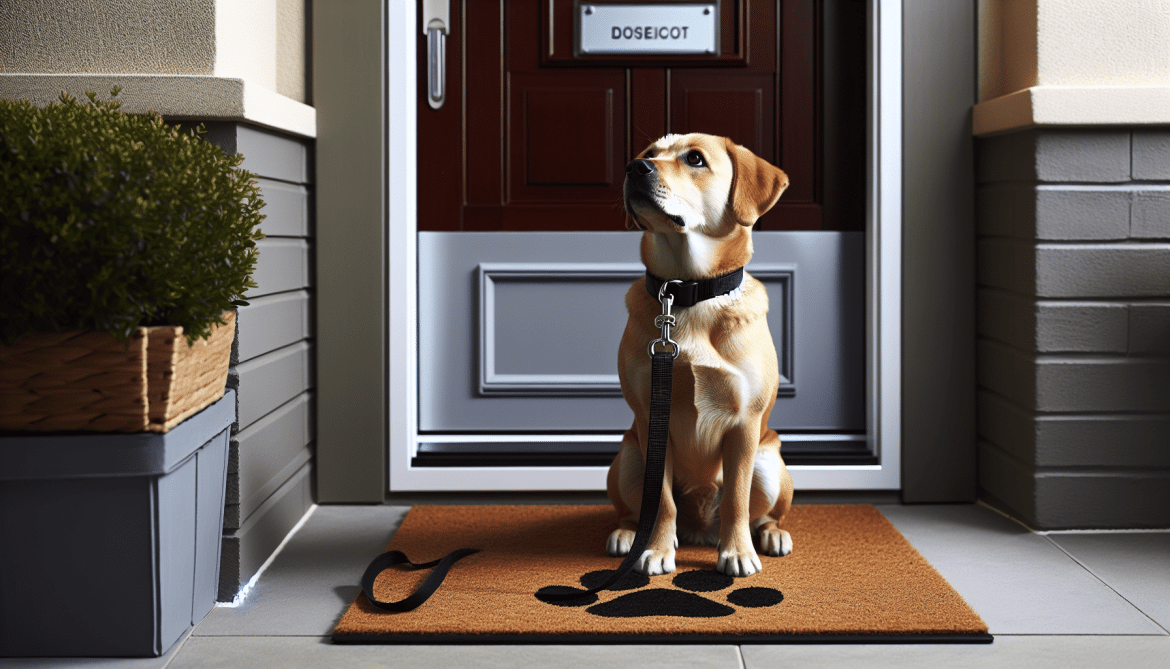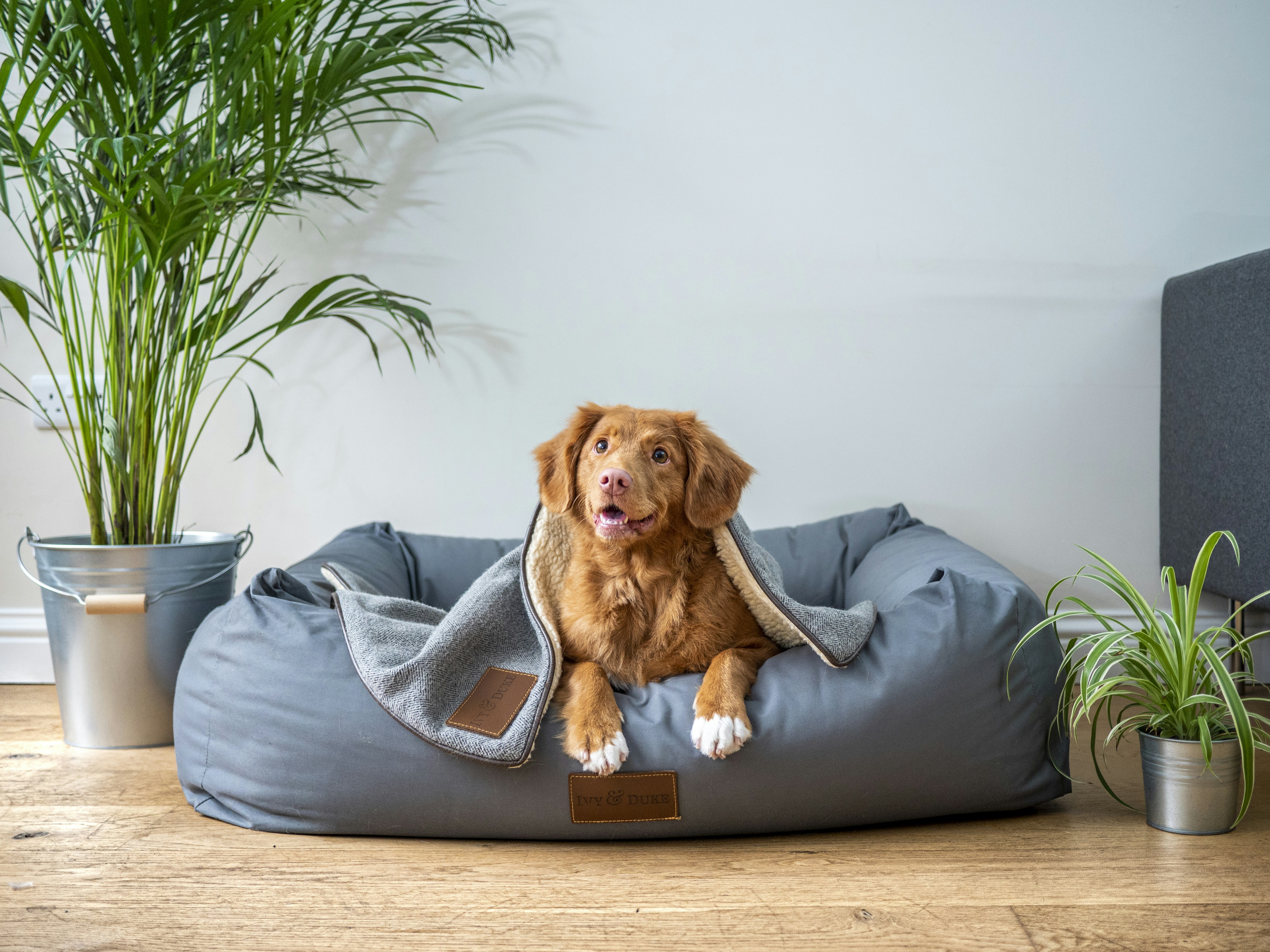If you're tired of constantly cleaning up after your dog's indoor accidents, it's time to learn how to train your furry friend to stop marking their territory indoors. Whether you recently adopted a new puppy or have an older dog with a marking habit, this article will provide you with effective and friendly tips to tackle this common problem. By understanding why dogs mark their territory and implementing positive reinforcement techniques, you'll be well on your way to having a clean and odor-free home. Say goodbye to those unwanted surprises and hello to a well-behaved and happy pooch!
Understanding the Issue
Identifying the Problem
If you've noticed your dog consistently marking their territory indoors, it's crucial to understand that this behavior can be frustrating. Marking refers to when dogs leave small amounts of urine in specific areas to establish their presence and claim their territory. It is important to differentiate marking from urination accidents or behavioral issues, as the approaches to addressing these problems may vary.
Recognizing the Reasons for Marking
Before we delve into the solutions, it's essential to understand why dogs engage in marking behavior. Marking can be attributed to a few different causes. First, it may be a territorial response, where dogs mark to communicate their ownership of a particular space. Second, marking can be a result of anxiety or stress, a way for dogs to relieve their emotional tension. Lastly, some dogs may mark to assert their dominance over other animals or even humans. Identifying the underlying reasons for marking can significantly inform our training approaches.
Establishing a Routine
Create a Schedule
One of the most effective ways to combat marking behavior is to establish a consistent routine for your dog. Dogs thrive on predictability, and having a structured schedule helps them understand when and where they can relieve themselves. Designate specific times throughout the day for meals, playtime, and outdoor bathroom breaks. By following a schedule, you give your dog a clear understanding of when they can expect to go outside to do their business.
Maintain Consistency
Consistency is key when it comes to training your dog to stop marking indoors. Stick to the established schedule and ensure that every member of your household follows it as well. When everyone is on the same page, your dog will more easily understand the boundaries and expectations. Additionally, consistency extends beyond the schedule. Use the same command or cue when instructing your dog to go outside, and provide consistent feedback and reinforcement for good behavior.

This image is property of images.unsplash.com.
Proper Housetraining Techniques
Reward-Based Training
A positive and reward-based training approach is highly effective in addressing marking behavior. When your dog successfully goes outside to relieve themselves, praise them enthusiastically, offer treats, and provide affection. By associating the act of going outside with positive reinforcement, your dog will be motivated to continue engaging in this desired behavior.
Establishing Boundaries
Teaching your dog boundaries is crucial in preventing marking indoors. Supervise your dog closely to catch any marking attempts promptly. Interrupt the behavior by using a firm but gentle vocal command, such as "No" or "Stop," while redirecting them to an appropriate location for elimination. Consistently reinforcing these boundaries will help your dog understand that marking inside is not acceptable.
Eliminating Odors
Cleaning Up Accidents
When a marking accident does occur, it's crucial to clean the affected area thoroughly. Use an enzyme-based cleaner specifically designed to eliminate urine odors. Regular cleaning products may not completely remove the scent, leaving behind trace amounts that can trigger your dog to mark in the same spot again. Be diligent in cleaning up accidents promptly to prevent further marking incidents.
Using Enzymatic Cleaners
Enzymatic cleaners contain special enzymes that break down the odor-causing compounds found in urine. These cleaners are highly effective in neutralizing the scent and are readily available at pet stores or online. Follow the manufacturer's instructions closely when using enzymatic cleaners to ensure maximum effectiveness. Remember that eliminating odors is essential in discouraging your dog from marking the same area repeatedly.
This image is property of images.unsplash.com.
Managing Your Dog's Environment
Using Baby Gates or Crates
When you're unable to supervise your dog closely, it's essential to restrict their access to certain areas of your home. Baby gates can be used to confine your dog to designated areas where they are closely monitored. Alternatively, crates can provide a safe and secure space for your dog when you're unable to directly supervise them. Be sure to introduce the crate as a positive and comfortable space for your dog, providing toys, blankets, and treats to make it an inviting environment.
Limiting Access to Certain Areas
Identify areas of your home where marking incidents tend to occur and limit your dog's access to these spaces. Close doors or use baby gates to prevent your dog from entering these areas unsupervised. By controlling their environment, you can effectively manage their marking behavior and gradually reintroduce access once the behavior is under control.
Redirecting Behaviors
Distraction Techniques
If you catch your dog in the act of marking indoors, distraction techniques can be useful in redirecting their focus. Quickly and calmly create a distraction, such as clapping your hands or making a loud noise, to interrupt the behavior. Once your dog is no longer marking, redirect their attention to a more appropriate activity, such as playing with a toy or engaging in a training exercise. Distraction techniques help your dog learn that marking is not acceptable and encourage them to engage in alternative behaviors.
Teaching Alternative Behaviors
Providing your dog with alternative behaviors is a proactive way to discourage marking. Teach your dog commands or tricks that they can perform to receive rewards and attention. When your dog is engaged in these alternative behaviors, they are less likely to engage in marking. By redirecting their focus onto more desirable activities, you can significantly reduce the incidences of marking indoors.
This image is property of images.unsplash.com.
Positive Reinforcement
Rewarding Good Behavior
Positive reinforcement is a powerful tool in changing your dog's behavior. When your dog exhibits the desired behavior of relieving themselves outdoors, provide immediate praise, rewards, and affection. These positive experiences create a strong association between going outside and receiving rewards, reinforcing their understanding that this is the preferred behavior.
Praise and Affection
Dogs thrive on love and attention from their owners. Offering praise and affection when your dog behaves appropriately reinforces their understanding of what is expected from them. Be generous with your words of encouragement and physical affection when your dog follows the established routine and shows signs of improvement. Remember, positive reinforcement is always more effective than punishment in dog training.
Seeking Professional Help
Consulting a Vet or Trainer
If you're struggling to address your dog's marking behavior despite your best efforts, it may be helpful to consult a veterinarian or professional dog trainer. They can provide expert guidance and tailor a training plan specific to your dog's unique needs. These professionals can help you identify any underlying medical issues that may contribute to the marking behavior or offer additional strategies to address the problem effectively.
Assessing Medical Issues
In some cases, marking can be a result of medical conditions such as urinary tract infections or hormonal imbalances. If your dog's marking behavior is persistent or accompanied by other concerning symptoms, it's crucial to seek veterinary attention. A thorough medical examination can help identify and address any underlying health issues contributing to the marking behavior.
Patience and Persistence
Understanding the Process Takes Time
Training your dog to stop marking territory indoors requires patience and persistence. Results may not be immediate, and setbacks can occur. Remember that dogs learn at their own pace, so it's important to be consistent and maintain a positive attitude throughout the training process. Celebrate small victories and remain dedicated to the ultimate goal of preventing indoor marking.
Consistently Working Toward Improvement
Consistency is key in making progress with your dog's marking behavior. Stick to the established routine, reinforce boundaries, and consistently use reward-based training techniques. Training should be a daily commitment, where you consistently reinforce positive behavior and redirect undesirable actions. By consistently working toward improvement, you will see gradual changes in your dog's marking behavior over time.
Preventing Regression
Identifying Triggers
To prevent regression, it's crucial to identify any triggers that may prompt your dog to mark indoors. Triggers can include the presence of other animals, unfamiliar scents, or changes in routine or environment. Pay close attention to your dog's behavior and surroundings to understand what may be triggering their marking. Once identified, take steps to minimize or eliminate these triggers to reduce the likelihood of marking incidents.
Implementing Preventative Measures
To further prevent regression, implement preventative measures. For example, if your dog is triggered by the presence of other animals outside, ensure they have limited exposure to areas where these animals frequent. Additionally, consider using belly bands or dog diapers as temporary solutions during the training process to prevent marking accidents indoors. By being proactive and implementing preventative measures, you can support your dog's progress and help prevent regression.
Training your dog to stop marking territory indoors is a process that requires understanding, consistency, and positive reinforcement. By identifying the problem, establishing a routine, implementing proper housetraining techniques, managing your dog's environment, redirecting behaviors, and seeking professional help when needed, you can effectively address marking behavior. Remember to be patient, persistent, and committed to working toward improvement. With time and effort, you can successfully train your dog to stop marking indoors and create a harmonious living environment for both you and your furry friend.




